Sure🙄🧐
’Frozen Dragon’ Species Was Trapped in Ice for 76 Mln Years
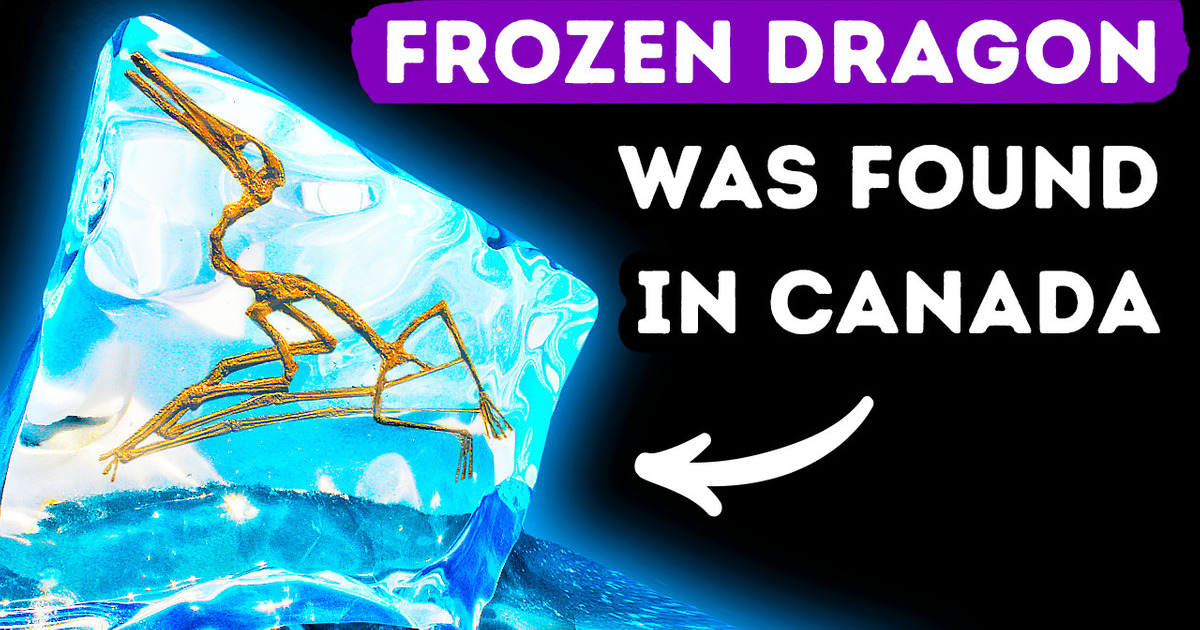
In a frosty Canadian park, hidden deep beneath layers of thick ice, scientists discovered a bizarre skeleton they named the “frozen dragon”. The skeleton had been in the frozen ice for millions of years. It took experts decades to work out the species of this strange fossil. It was identified as a new genus of pterosaur.
Pterosaurs were massive flying reptiles with wingspans of over 16 feet. Their heads were 3.5 times the size of their bodies. Pterosaurs lived 76 million years ago when they soared above the dinosaurs. Scientists described them as the “biggest, meanest, and most bizarre animals that ever flew.” The new genus has been named Cryodrakon Boreas, which translates to “frozen dragon of the north winds.”
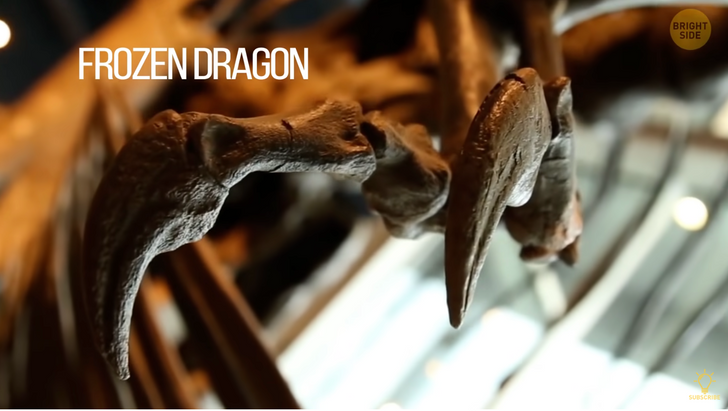
In 2013, a young mountaineer was climbing one of the tallest mountains in Western Europe, Mont Blanc. He noticed a strange metal box poking out of the snow. The mountaineer pried the box open and found that it was filled with precious rubies, emeralds, and sapphires. The climber immediately handed the box to the authorities.
It was discovered that the box likely belonged to a passenger on one of two flights from India that crashed into the mountain over 50 years ago. The box was valued to be worth over $200,000, and authorities are still searching for the heir to the small box of treasures.
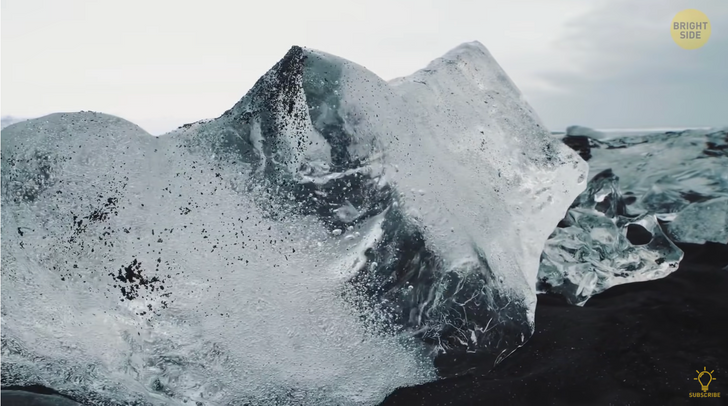
In northwest Siberia in 2007, a reindeer herder was on an outing with his sons when he noticed something strange in the ice. The man realized it was a frozen Mammoth calf and immediately contacted the local museum. The calf was named Lyuba and was the best-preserved mammoth mummy in the world at the time of its discovery.
Lyuba had been in the ice for 41,800 years and is around 30–35 days old. From trunk to tail, the mammoth calf is roughly the same size as a large calf. If you’re interested in seeing for yourself, Lyuba travels to museums all around the world.
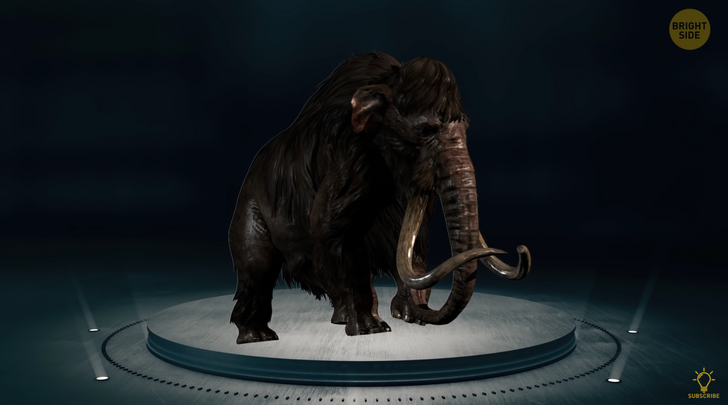
On the frozen continent of Antarctica, covered in layers of ice and snow, is Mount Erebus — the frozen volcano. The volcano was discovered in the middle of an eruption in 1841 by explorers on an arctic expedition. The volcano is over 12,000 ft tall [(3657 m)] and has been active for the last 1.3 million years.
Deep within the middle of the volcano is a huge crater filled with large volumes of molten lava. The volcano has occasional explosions, which means it is classified as being in continuing eruption. However, these eruptions are nothing to worry about because they are generally rather small.
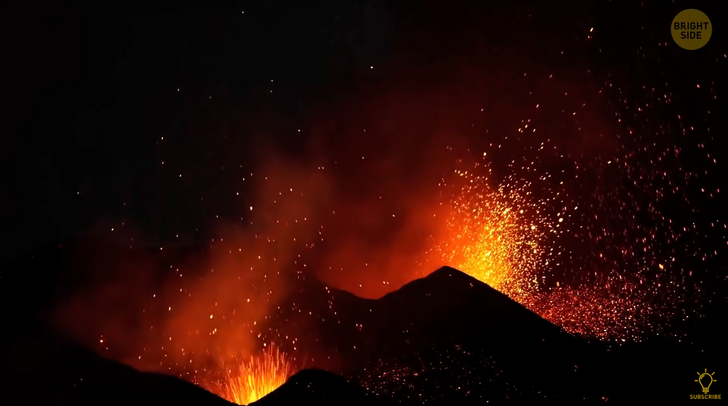
Back in 1991, two hikers were traveling across the Italian Alps when they stumbled across a body that they presumed to belong to a recently lost hiker. The duo trudged back down the mountain to report their unfortunate findings. Once the remains were recovered, it was clear that the body was not recent at all. Scientists determined that the iceman was more than 5,000 years old and named him Otzi.
The discovery was unlike anything scientists had ever seen before because the body was so well-preserved. For years, Otzi was studied by scientists who discovered that our ancestors have a lot more in common with us than we ever knew before. Otzi was covered in ink body art. Research done on the contents of his stomach revealed that his last meal was dry-cured meat, similar to the bacon we eat today. Otzi has at least 19 relatives living today, somewhere in Central Europe.
Scientists were researching ancient squirrel burrows in Siberia when they came across something interesting. One of the squirrels had hidden away precious seeds deep beneath the ground. The seeds had been encased in ice for 32,000 years.

The seeds were for the flower Silene stenophylla, which had long since gone extinct. Amazingly, scientists were able to recover plant tissue from inside the seeds and grow an entire crop of flowers. They’ve since reintroduced the previously extinct flower to natural habitats all across the world.
In 1930, a team of Norwegian scientists sailed around the Arctic Ocean, conducting research on the Seas and Glaciers. They reached White Island, a dangerous and icy land no human had set foot on before. Or so they thought. The scientists were shocked to discover the tip of a small boat sticking out of the snow. Frozen inside the boat, they found scientific equipment and various personal items, including a jacket monogrammed “S.A. Andrée”. They had discovered the wreck of the famous Andrée Arctic Balloon Expedition.
In 1897 Swedish explorers, led by Andrée attempted to travel to the North Pole by hydrogen balloon. No one has ever heard from them ever again. People only found out what happened to them when the wreck was discovered 33 years later. It turns out that the balloon had crashed on White Island only two days after departing from Sweden. The explorers traveled along the island on a small makeshift boat but were unable to make it any further.
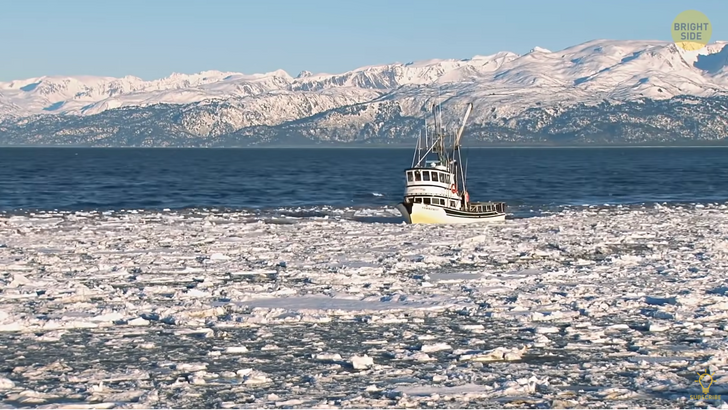
The best-preserved wooly mammoth ever found was discovered in an area of permafrost in Siberia in 2010. Scientists named the frozen mammoth Yuka after the small village near where it was found. Yuka had been frozen for 39,000 years and is thought to have been around 6–8 years old. Because Yuka is so well-preserved, it has been studied for years and provided new information about Mammoths. In 2019, scientists reported that they were able to activate cells taken from Yuka’s tissue. Maybe one day we’ll have wooly mammoths roaming the land.
From looking at pictures and videos of Antarctica, the continent appears to be freezing cold, covered in snow, and flat except for a few small hills. Scientists believed that too. When studying the Gamburtsev Mountains in the early 2000s, they were shocked to discover that the small rocky hills were actually the peak of a gigantic mountain formation under a mile of snow. Using radar technology, researchers worked out that the mountains are really around 10,000 feet tall and sprawl across 750 miles. This is around the same size as the European Alps, except hidden under tons of ice and snow.
At a gold mine in Siberia, a businessman was examining a nearby river when he noticed something interesting in the frost. It was a small wooly rhino calf that was later named Sasha. The wooly rhino has been extinct for 15,000 years. It’s thought that Sasha could’ve been frozen in the ice for up to 39,000 years. Sasha is unique because it’s the only full-body wooly rhino to have ever been discovered.
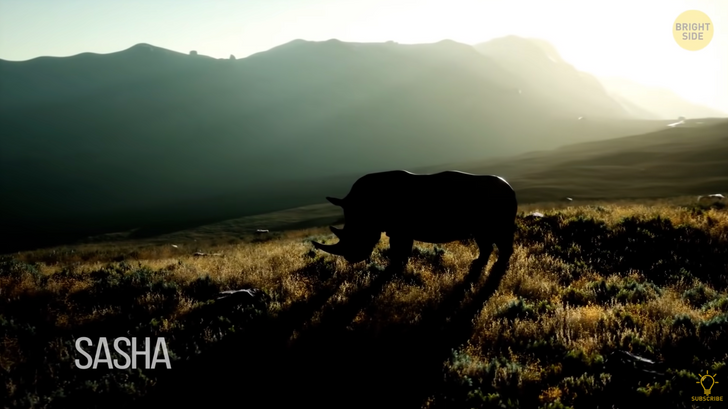
Glaciers around the Northern Italian town of Pelo have begun to melt. Artifacts from decades and even centuries ago have been discovered pouring out of the ice. Personal belongings from soldiers have been found, things like diaries, photographs, and even love letters. Historians have even uncovered an entire cabin preserved beneath the ice. The cabin was filled with hard metal helmets and clothes.
In 1845 Sir John Franklin embarked on an ill-fated expedition to the North Pole. The crew traveled on two ships, H.M.S. Erebus and the ironically named H.M.S. Terror. The expedition met with disaster, and both ships were lost to the icy waters.
In 2016, the H.M.S. Terror was discovered by a team of researchers. Despite being lost for 170 years, the freezing cold waters had maintained the ship in pristine condition. Scientists described the ship as “frozen in time.” Dinner plates and glasses were still on shelves, beds and desks were still in order, and even the passenger’s luggage appeared to be in good condition. The H.M.S. Erebus was also discovered nearby, but due to changing water conditions, the ship wasn’t in great shape.
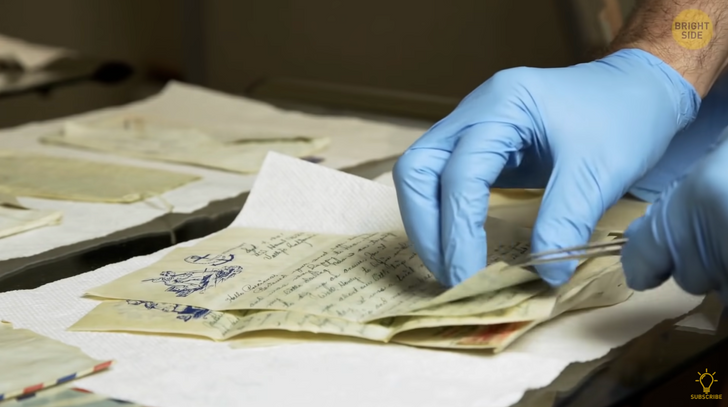
The glacial ice surrounding a mountain passageway in Norway that was notoriously used by the Vikings has revealed hundreds of ancient artifacts. One of these artifacts was a giant unopened wooden box that was welded together. Researchers were beside themselves with anticipation, waiting to open this box. They believed it would be filled with Viking treasures or artifacts that would give us an insight into ancient society. When they opened the box, all that was inside was a plain old beeswax candle.
It turns out that this box wasn’t actually as old as they thought it was. By analyzing the candle, they discovered that the box dates back to the 17th century. The age of the Vikings had ended by the 11th century. It’s likely that the candle box belonged to a farmer who was shipping it from his summer farm to his winter farm to light up the long nights.
Comments
Related Reads
My Husband Caught Me Lying; He Blew Up and Took It Out on My Daughter Instead

11 Stories That Prove Kindness Is Not Weakness, It’s a Healing Superpower

20 Moments When Kindness Stepped In Like a Guardian Angel

I Told My SIL to Leave My Birthday After She Cut My Cake—Now My Whole Family Is Punishing Me

12 Stories That Prove Little Acts of Kindness Never Stay Little

15 Stories That Show Kindness Is the Quiet Power the World Often Forgets

I Closed My Doors to My Entitled In-Laws on the Weekend and I Don’t Regret It

I Refused to Share My Inheritance, Now My Own Kids Are Turning Against Me

I Caught My MIL Secretly Filming Me While I Breastfed My Baby

I’m Not Delaying My Retirement for My Sick Daughter — I’m Done Being Her Cash Cow

I Discovered My Firm Was Secretly Hiring for My Position—HR’s Response Shocked Me

10 True Stories With an Ending So Twisted They Deserve an Oscar
